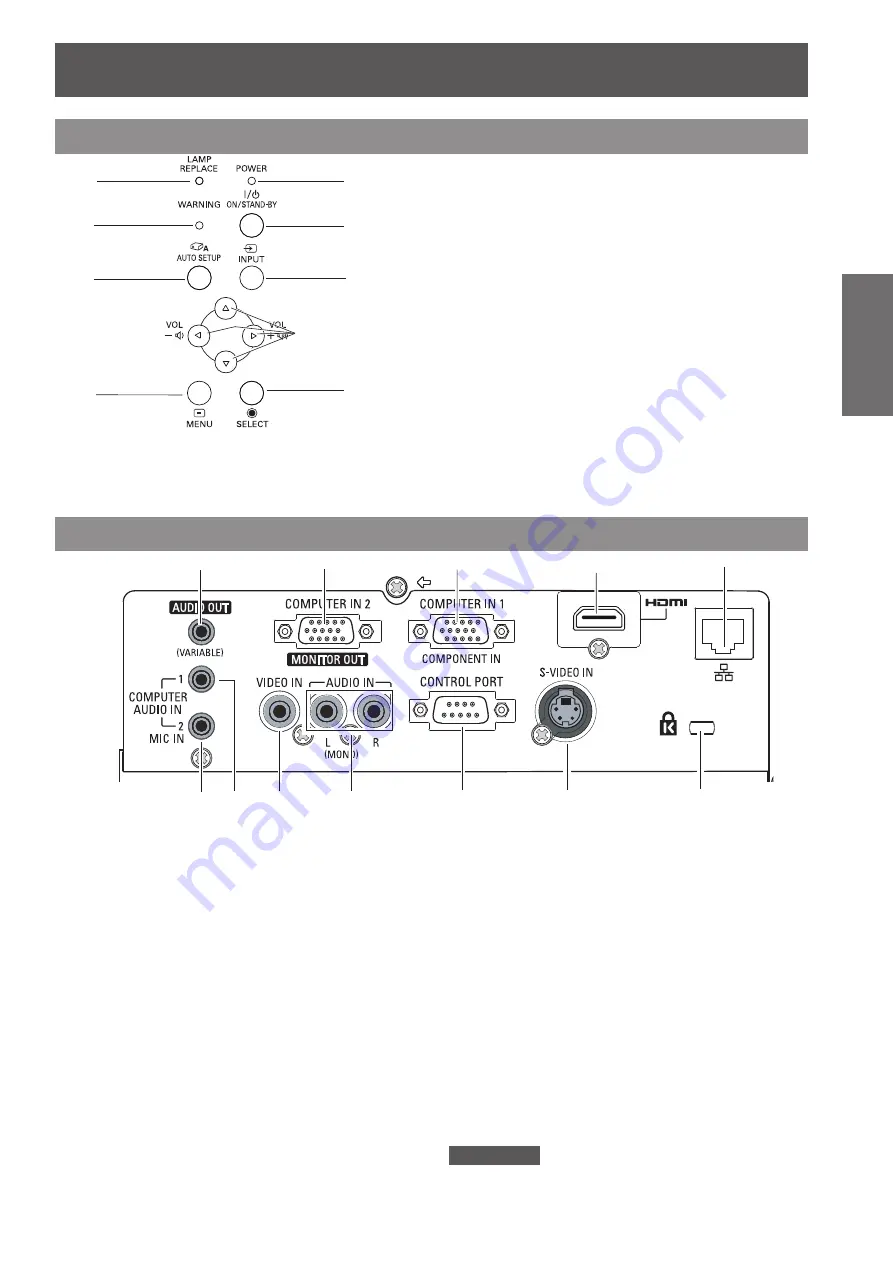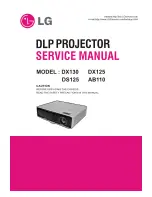
About Your Projector
ENGLISH -
19
Preparation
Rear terminals
Control panel
(1) LAN
Connect to a LAN cable for network connection.
(2) HDMI
Connect to HDMI input signals.
(3) COMPUTER IN 1/ COMPONENT IN
Connect to COMPUTER IN 1/ COMPONENT IN
input signals.
(4) COMPUTER IN 2/
MONITOR OUT
Connect to COMPUTER IN 2/
MONITOR OUT
input signals or outputs the analog RGB signals
input the projector.
(5) AUDIO OUT (VARIABLE)
Output the audio signals input to the projector.
(6) Security slot
Attach the commercial shackle lock, manufactured
by Kensington, to protect your projector.
Compatible with the Kensington MicroSaver
Security System.
(7) S-VIDEO IN
Connect to S-VIDEO input signals.
(8) CONTROL PORT
Connect to a computer via an RS-232C cable.
(9) AUDIO IN
Connect to the audio input signals.
AUDIO IN has right and left (L and R) terminals.
For a mono audio signal (a single audio jack),
connect it to the L (MONO) jack.
(10) VIDEO IN
Connect to VIDEO input signals.
(11) COMPUTER AUDIO IN 1
Connect to the audio input signals.
(12) COMPUTER AUDIO IN 2 (MIC IN)
Connect to the audio input signals. Or connect
the MIC to this jack.
Attention
When a LAN cable is directly connected to the projector,
z
the network connection must be made indoors.
Adjust the volume level (with <VOL -/+> buttons).
(
Æ
page 33)
(3) <INPUT> button
Selects the input signal. (
Æ
page 30)
(4) <ON/STAND-BY> button
Turn the projector on/off.
(5) <POWER> indicator
Indicate the power status.
(6) <MENU> button
Displays the MENU screen. (
Æ
page 35)
(7) <AUTO SETUP> button
Execute the setting of Auto setup in the setting
menu.
(8) <WARNING> indicator
Indicate the abnormal conditions of the projector.
(9) <LAMP REPLACE> indicator
Lights yellow when the projection lamp reaches its
end of life.
(1)
(3)
(4)
(5)
(6)
(7)
(8)
(9)
(10)
(11)
(2)
(12)
(1)
(2)
(3)
(4)
(5)
(6)
(7)
(8)
(9)
(1) <SELECT> button
Execute the selected item.
(2) ▲▼◄► (VOL -/+) buttons
Navigate the MENU screen.
















































